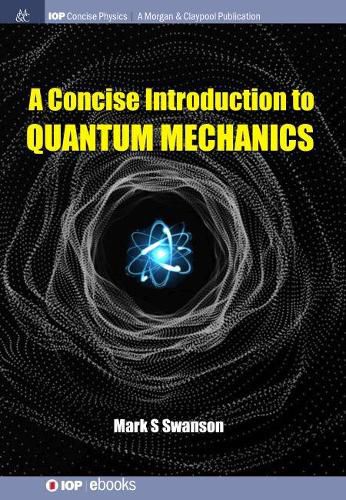Readings Newsletter
Become a Readings Member to make your shopping experience even easier.
Sign in or sign up for free!
You’re not far away from qualifying for FREE standard shipping within Australia
You’ve qualified for FREE standard shipping within Australia
The cart is loading…






This title is printed to order. This book may have been self-published. If so, we cannot guarantee the quality of the content. In the main most books will have gone through the editing process however some may not. We therefore suggest that you be aware of this before ordering this book. If in doubt check either the author or publisher’s details as we are unable to accept any returns unless they are faulty. Please contact us if you have any questions.
Assuming a background in basic classical physics, multivariable calculus, and differential equations, A Concise Introduction to Quantum Mechanics provides a self-contained presentation of the mathematics and physics of quantum mechanics. The relevant aspects of classical mechanics and electrodynamics are reviewed, and the basic concepts of wave-particle duality are developed as a logical outgrowth of experiments involving blackbody radiation, the photoelectric effect, and electron diffraction. The Copenhagen interpretation of the wave function and its relation to the particle probability density is presented in conjunction with Fourier analysis and its generalization to function spaces. These concepts are combined to analyze the system consisting of a particle confi ned to a box, developing the probabilistic interpretation of observations and their associated expectation values. The Schroedinger equation is then derived by using these results and demanding both Galilean invariance of the probability density and Newtonian energy-momentum relations. The general properties of the Schroedinger equation and its solutions are analyzed, and the theory of observables is developed along with the associated Heisenberg uncertainty principle. Basic applications of wave mechanics are made to free wave packet spreading, barrier penetration, the simple harmonic oscillator, the Hydrogen atom, and an electric charge in a uniform magnetic fi eld. In addition, Dirac notation, elements of Hilbert space theory, operator techniques, and matrix algebra are presented and used to analyze coherent states, the linear potential, two state oscillations, and electron diffraction. Applications are made to photon and electron spin and the addition of angular momentum, and direct product multiparticle states are used to formulate both the Pauli exclusion principle and quantum decoherence. The book concludes with an introduction to the rotation group and the general properties of angular momentum.
$9.00 standard shipping within Australia
FREE standard shipping within Australia for orders over $100.00
Express & International shipping calculated at checkout
This title is printed to order. This book may have been self-published. If so, we cannot guarantee the quality of the content. In the main most books will have gone through the editing process however some may not. We therefore suggest that you be aware of this before ordering this book. If in doubt check either the author or publisher’s details as we are unable to accept any returns unless they are faulty. Please contact us if you have any questions.
Assuming a background in basic classical physics, multivariable calculus, and differential equations, A Concise Introduction to Quantum Mechanics provides a self-contained presentation of the mathematics and physics of quantum mechanics. The relevant aspects of classical mechanics and electrodynamics are reviewed, and the basic concepts of wave-particle duality are developed as a logical outgrowth of experiments involving blackbody radiation, the photoelectric effect, and electron diffraction. The Copenhagen interpretation of the wave function and its relation to the particle probability density is presented in conjunction with Fourier analysis and its generalization to function spaces. These concepts are combined to analyze the system consisting of a particle confi ned to a box, developing the probabilistic interpretation of observations and their associated expectation values. The Schroedinger equation is then derived by using these results and demanding both Galilean invariance of the probability density and Newtonian energy-momentum relations. The general properties of the Schroedinger equation and its solutions are analyzed, and the theory of observables is developed along with the associated Heisenberg uncertainty principle. Basic applications of wave mechanics are made to free wave packet spreading, barrier penetration, the simple harmonic oscillator, the Hydrogen atom, and an electric charge in a uniform magnetic fi eld. In addition, Dirac notation, elements of Hilbert space theory, operator techniques, and matrix algebra are presented and used to analyze coherent states, the linear potential, two state oscillations, and electron diffraction. Applications are made to photon and electron spin and the addition of angular momentum, and direct product multiparticle states are used to formulate both the Pauli exclusion principle and quantum decoherence. The book concludes with an introduction to the rotation group and the general properties of angular momentum.